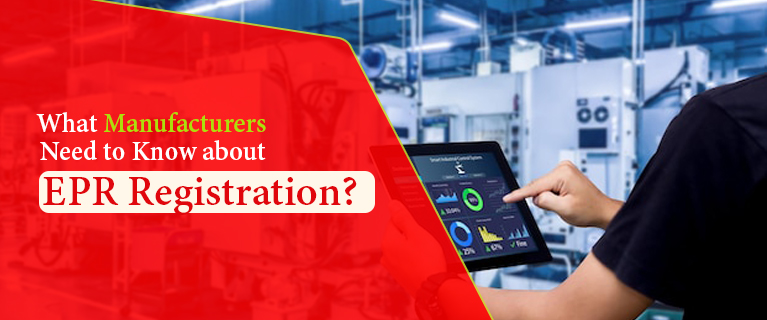The Complete Procedure Of EPR Registration In India
In recent years, environmental concerns and sustainability have gained significant importance in India. With growing awareness about the impact of electronic waste on the environment and public health, the Indian government introduced the concept of Extended Producer Responsibility (EPR) to manage e-waste effectively. EPR places the onus of responsibly managing electronic waste on the producers or manufacturers of electronic products. In this blog, we will provide a comprehensive step-by-step guide to the complete procedure of EPR registration in India.
Understanding Extended Producer Responsibility (EPR):
Extended Producer Responsibility (EPR) is a policy approach designed to make producers of products, especially electronics, responsible for managing the waste generated from their products throughout its lifecycle. The goal of EPR registration is to promote sustainable waste management and reduce the environmental impact of electronic waste.
Under the EPR registration, producers, brand owners, and importers of electronic products are legally obligated to establish collection mechanisms for e-waste generated from their products, ensure the environmentally sound disposal of collected e-waste and meet the annual recycling targets based on their sales of electronic products.
Scope of EPR Registration:
The EPR registration is mandatory for all producers, brand owners, and importers of electronic products that fall under the definition of 'covered electronic products.' These products include, but are not limited to Computers and computer peripherals, Telecommunication equipment, Consumer electronics such as TVs, refrigerators, washing machines, air conditioners, etc, Electrical lamps and other equipment containing mercury, lead, cadmium, or other hazardous substances.
Step-by-Step Guide to EPR Registration in India:
The procedure for EPR registration in India involves the following steps:
Step 1: Identification of Covered Electronic Products : The first step in the EPR registration process is to identify whether the electronic products manufactured, imported, or sold by the company fall under the category of 'covered electronic products'.
Step 2: Formation of a Producer Responsibility Organization (PRO) : As a producer or manufacturer of covered electronic products, the company must form or be associated with a Producer Responsibility Organization (PRO). The PRO will be responsible for implementing the EPR program on behalf of the producer and ensuring the proper management of e-waste.
Step 3: Obtaining Authorization : To initiate the EPR registration process, the producer must apply for authorization from the State Pollution Control Board (SPCB) or Pollution Control Committee (PCC) of the concerned state or Union Territory. The application for authorization must include the details of the company, including name, address, contact information, etc, the type and quantity of electronic products manufactured, imported, or sold and an agreement with the PRO responsible for the implementation of the EPR program.
Step 4: Submission of Documents : The producer must submit a set of documents along with the authorization application. These documents may include:
Step 5: Payment of Fees : The producer is required to pay the necessary fees as specified by the SPCB or PCC for the processing of the EPR authorization application.
Step 6: Evaluation and Approval : The SPCB or PCC evaluates the application, along with the submitted documents and fees. If all the requirements are met, and the proposal is found to be satisfactory, the authorization for EPR will be granted.
Step 7: Implementation of EPR Program : Once the EPR authorization is granted, the producer, along with the PRO, must establish collection mechanisms for e-waste generated from their products. This may include setting up collection centers, tie-ups with authorized recyclers, or take-back schemes.
Step 8: Annual Reporting and Compliance : The producer is required to submit annual reports to the SPCB or PCC, detailing the quantity of e-waste collected and recycled as per the EPR registration process. The reports should also include compliance with the annual recycling targets set by the government.
Step 9: Regular Audits : The SPCB or PCC may conduct periodic audits to verify the producer's compliance with the EPR program and the proper management of e-waste.
Step 10: Renewal of Authorization : The EPR authorization is typically granted for a specific period, after which it needs to be renewed. The producer must apply for the renewal of the authorization before its expiry to continue the EPR registration.
Read Also This - Insights on CPCB EPR Online RegistrationConclusion
Extended Producer Responsibility (EPR) is a progressive policy approach that places the onus of managing electronic waste on producers and manufacturers. EPR registration is mandatory for all producers, brand owners, and importers of covered electronic products in India. By following the step-by-step guide to EPR registration, producers can fulfil their environmental responsibility and contribute to sustainable waste management. The EPR program not only benefits the environment but also helps create a circular economy by promoting the recycling and reuse of electronic waste, reducing its adverse impact on nature and society. As the awareness about environmental conservation grows, EPR registration and compliance play a pivotal role in India's journey towards a greener and more sustainable future.




Comments
Post a Comment